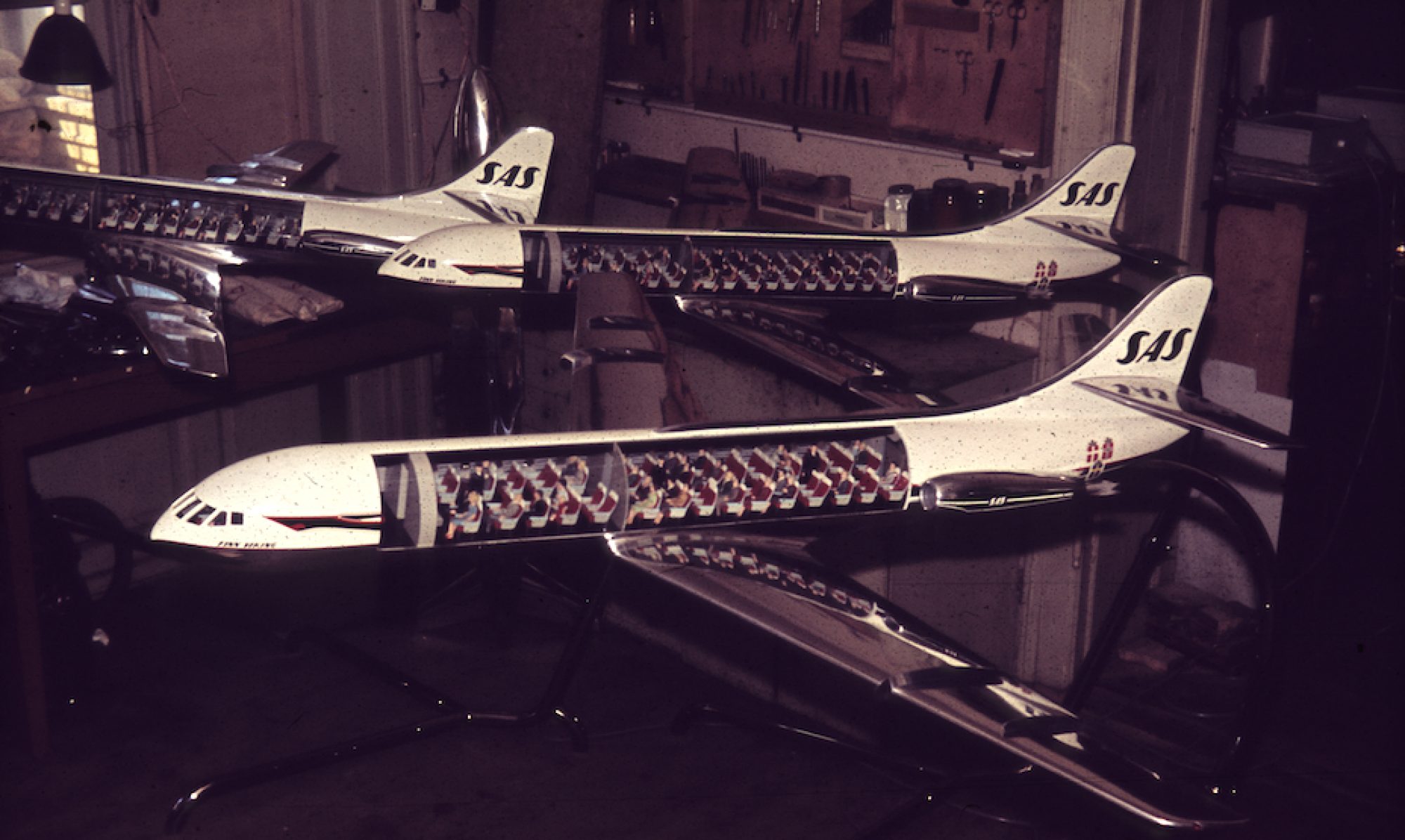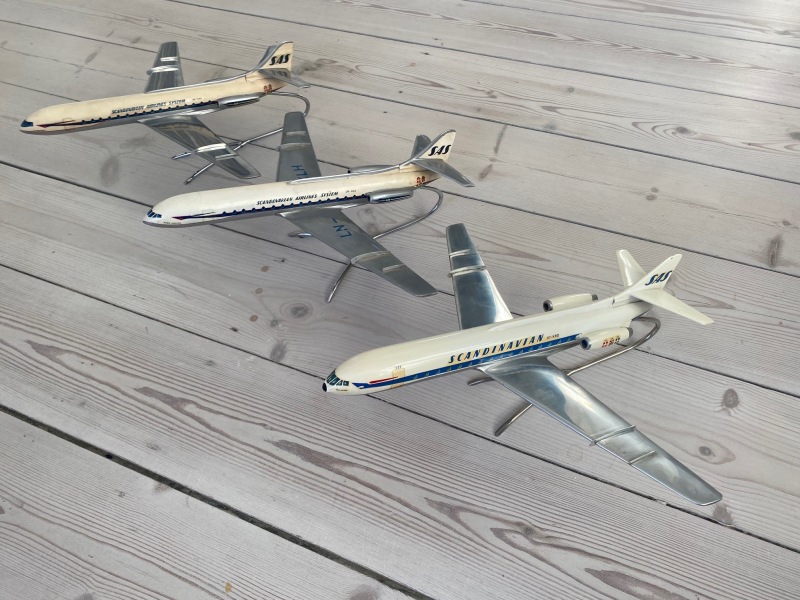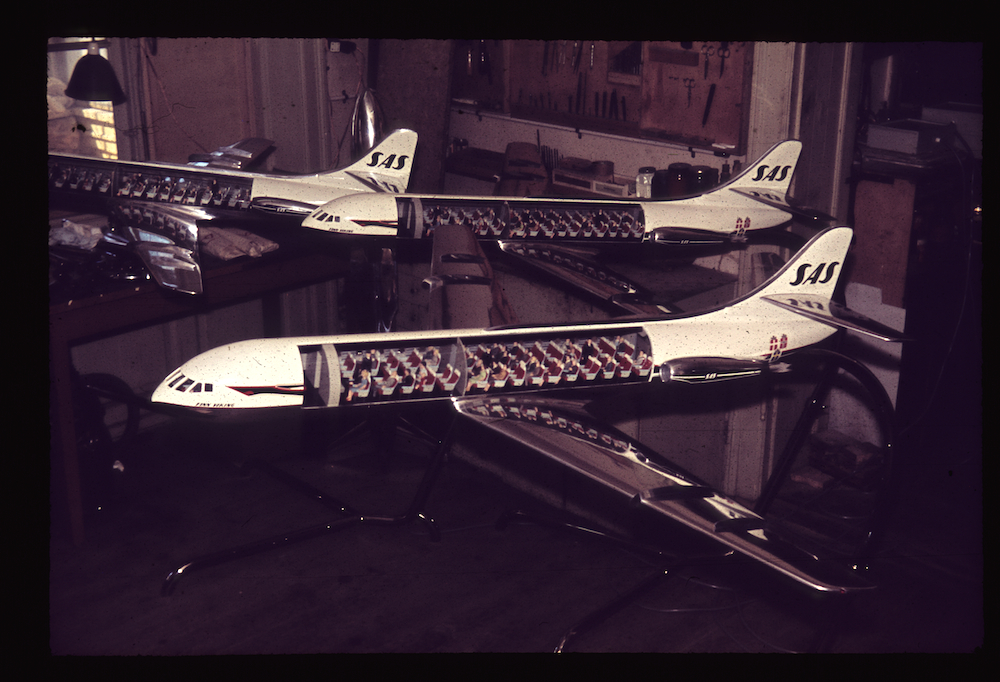Caravelle trio
As a launch customer on the Caravelle, SAS of course needed promotional models of the new aircraft, and as usual they turned to W. Osgaard & Co. for the job. During SAS’ years of using the Caravelle, W. Osgaard & Co. and later Fermo made several different versions of the model: 1:25th scale cutaways (two different SAS liveries), 1:50th cutaways (two different SAS liveries) as well as solid fuselage versions and of course the 1:100th scale models shown here. Of the 1:100th scale models at least four versions exist: The three versions shown in the pictures here and the ultra rare circa 1964 Thai Airways livery version. The casting used for all 1:100th scale Caravelles was the same, and the expensive steel mould was taken over by Fermo when Osgaard seized operations.
Despite a long production run and probably a quite high production number, these Caravelle models rarely show up, and when they do they’re often in bad condition.


